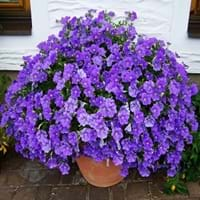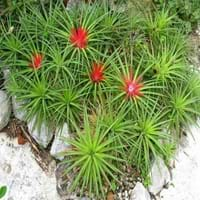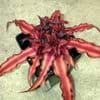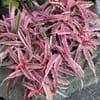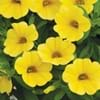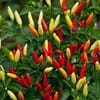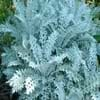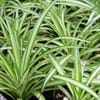What is
Life Span
Annual
Perennial
Type
Tender Perennial
Tender Perennial
Origin
North America, Mexico, Central America, South America
North America, Mexico, Latin America and the Caribbean, Caribbean, Central America, South America
Types
Not Available
Not Available
Habitat
Depression on prairies, Moist Ditches
Terrestrial
USDA Hardiness Zone
9-11
9-11
AHS Heat Zone
12-1
Not Available
Sunset Zone
8, 9, 14, 15, 16, 17, 18, 19, 20, 21, 22, 23, 24
Not Available
Habit
Not Available
Upright/Erect
Information
Plant Size
Minimum Height
102.00 cm
99+
150.00 cm
99+
Minimum Width
20.30 cm
99+
180.00 cm
99+
Plant Color
Flower Color
White, Yellow, Red, Blue, Purple, Orange, Pink
Reddish Plum
Flower Color Modifier
Bicolor
Bicolor
Fruit Color
Not Available
Yellow
Leaf Color in Spring
Green, Gray Green
Dark Green
Leaf Color in Summer
Green, Gray Green
Dark Green
Leaf Color in Fall
Green, Gray Green
Dark Green
Leaf Color in Winter
Light Green
Light Green
Shape
Leaf Shape
Oblong
Long Barbed
Thorns
No
Yes
Season
Plant Season
Spring, Summer, Fall, Winter
Spring, Summer, Fall, Winter
Growing Conditions
Sunlight
Full Sun, Partial Sun
Not Available
Growth Rate
Fast
Not Available
Type of Soil
Loam, Sand
Not Available
The pH of Soil
Acidic, Neutral
Not Available
Soil Drainage
Well drained
Not Available
Bloom Time
Indeterminate
Not Available
Repeat Bloomer
Not Available
Not Available
Tolerances
Drought
Drought
Care
Where to Plant?
Container, Ground, Pot
Ground
How to Plant?
Seedlings, Stem Planting, Transplanting
Leaf Cutting, Seedlings
Plant Maintenance
Medium
Low
Watering Plants
Watering Requirements
Keep the ground moist but not water-logged, Requires regular watering, Requires watering in the growing season
Over-watering can cause leaf problems or root diseases, Water in morning to avoid prompting diseases
In Summer
Lots of watering
Lots of watering
In Spring
Moderate
Moderate
In Winter
Average Water
Average Water
Soil
Soil pH
Acidic, Neutral
Not Available
Soil Type
Loam, Sand
Clay, Loam, Sand
Soil Drainage Capacity
Well drained
Not Available
Sun Exposure
Full Sun, Partial Sun
Not Available
Pruning
Prune to stimulate growth
Remove damaged leaves, Remove dead branches, Remove dead leaves
Fertilizers
All-Purpose Liquid Fertilizer
fertilize in growing season
Pests and Diseases
Red blotch
Fungal Diseases
Plant Tolerance
Drought
Drought
Facts
Flowers
Showy
Yes
Flower Petal Number
Single, Double, Semi-Double
Not Available
Fruits
Showy Fruit
No
Yes
Edible Fruit
No
Yes
Fragrance
Fragrant Flower
No
Not Available
Fragrant Fruit
No
Not Available
Fragrant Leaf
No
Not Available
Fragrant Bark/Stem
No
Not Available
Showy Foliage
No
Not Available
Showy Bark
No
Not Available
Foliage Texture
Medium
Not Available
Foliage Sheen
Matte
Not Available
Evergreen
No
No
Invasive
No
Yes
Self-Sowing
No
Not Available
Attracts
White bugs
Birds, Insects
Allergy
Not Available
Not Available
Benefits
Uses
Aesthetic Uses
Beautification, Bouquets, Landscape Designing, Showy Purposes, Used for decorating walls, fences, gates, hedges, etc.
Borders, Ground Cover
Beauty Benefits
Not Available
Not Available
Edible Uses
No
Yes
Environmental Uses
Air purification
Air purification
Plant Benefits
Medicinal Uses
Not Available
Cough
Part of Plant Used
Flowers
Fruits, Leaves
Other Uses
Decoration Purposes, Showy Purposes, Used as Ornamental plant
Fibre
Used As Indoor Plant
Yes
No
Used As Outdoor Plant
Yes
Yes
Garden Design
Bedding Plant, Container, Hanging Basket, Houseplant, Mixed Border, Rock Garden / Wall, Tropical
Hedges
Scientific Name
Botanical Name
CALIBRACHOA
BROMELIA
Common Name
Calibrachoa, Million Bells
Heart-of-Flame
In Hindi
Calibrachoa
Heart-of-flame
In German
Calibrachoa
Herz -of -Flame
In French
Calibrachoa
Coeur-de- flamme
In Spanish
Calibrachoa
Corazón de la llama
In Greek
Calibrachoa
Καρδιά - of- Φλόγα
In Portuguese
Calibrachoa
Coração -de- Chama
In Polish
Calibrachoa
Heart- of- Płomień
In Latin
Calibrachoa
Cor - de - flamma
Classification
Kingdom
Plantae
Plantae
Phylum
Tracheophyta
Tracheophyta
Class
Magnoliopsida
Liliopsida
Order
Solanales
Poales
Family
Solanaceae
Bromeliaceae
Genus
Calibrachoa
Bromelia
Clade
Angiosperms, Eudicots
Angiosperms, Commelinids, Monocots
Tribe
Not Available
Not Available
Subfamily
Petunioideae
Bromelioideae
Number of Species
16
99+
50
99+
|
||
|
||
|
